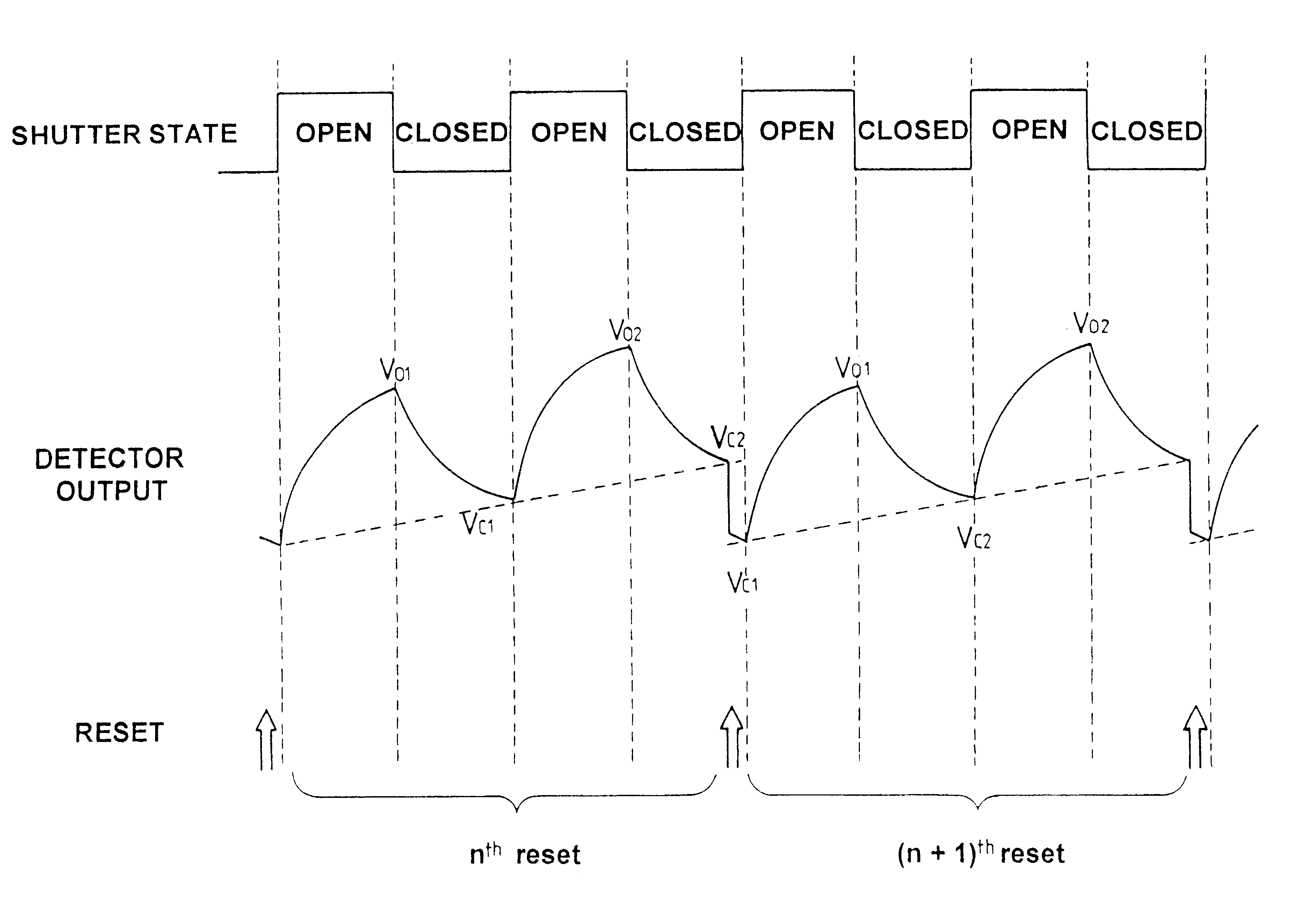Image processing with modified ramp signal
- Summary
- Abstract
- Description
- Claims
- Application Information
AI Technical Summary
Benefits of technology
Problems solved by technology
Method used
Image
Examples
Embodiment Construction
FIG. 1a shows an array 1 of sensors 2 for use in producing an image of the signature of a scene in the thermal (infra-red) range. Each sensor 2 of the array comprises an uncooled detector element 3 and an associated amplifier 4 as shown in FIG. 1b. The detector can be represented as a capacitance C.sub.D in parallel with an (undesirable) parasitic resistance R.sub.D.
In the case of a pyroelectric array, no bias voltage is applied to the detector element 3, and a current is generated in response to radiation incident upon the detector. This is amplified by the charge amplifier 4 to produce an output voltage.
In order to increase the sensitivity of the array 1, the radiation flux incident upon each detector element 3 is modulated by a shutter (not shown). In its open position, the shutter allows radiation to fall upon a detector. In its closed position, the radiation is either partially or totally prevented from reaching the detector. By comparing the voltage signals output from the amp...
PUM
 Login to View More
Login to View More Abstract
Description
Claims
Application Information
 Login to View More
Login to View More - R&D
- Intellectual Property
- Life Sciences
- Materials
- Tech Scout
- Unparalleled Data Quality
- Higher Quality Content
- 60% Fewer Hallucinations
Browse by: Latest US Patents, China's latest patents, Technical Efficacy Thesaurus, Application Domain, Technology Topic, Popular Technical Reports.
© 2025 PatSnap. All rights reserved.Legal|Privacy policy|Modern Slavery Act Transparency Statement|Sitemap|About US| Contact US: help@patsnap.com



